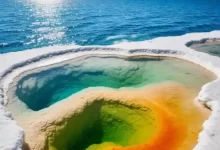Olfactory Archaeology: Unearthing Lost Scents and Reconstructing Fragrant Histories
Decoding Ancient Aromas | The Science and Art of Resurrecting Perfumes from Bygone Eras

Abstract: Olfactory Archaeology explores the scientific and historical reconstruction of ancient scents, transforming residue analysis, textual interpretation, and material science into tangible aromatic experiences. This article delves into methodologies like gas chromatography-mass spectrometry (GC-MS) of archaeological artifacts, deciphering historical perfume formulas, and the ethical complexities of reviving olfactory heritage. Discover how researchers resurrect scents from Egyptian temples, Roman baths, and medieval apothecaries, revealing how fragrance shaped rituals, economies, and daily life across civilizations. Learn about groundbreaking projects bridging archaeology, chemistry, and perfumery to preserve humanity’s intangible scent legacy.
Body Content:
The musty silence of an archaeological site seems devoid of scent, yet every artifact whispers olfactory secrets. Olfactory Archaeology, an emerging interdisciplinary field, challenges the visual dominance of historical interpretation by asserting that scent was a fundamental axis of human experience. By analyzing residues in ceramic vessels, studying botanical remains, and decoding ancient texts, researchers are reconstructing the aromatic landscapes of antiquity—a sensory revival reshaping our understanding of culture, trade, and identity.
The Evidentiary Trail: From Residues to Reconstructions
The foundation of olfactory archaeology lies in material science. Gas chromatography-mass spectrometry (GC-MS) enables scientists to identify organic compounds absorbed into pottery, burial shrouds, or cosmetic tools. A 2023 study of Egyptian alabaster jars from Pharaoh Hatshepsut’s era revealed traces of Anthemis nobilis (chamomile) and Boswellia sacra (frankincense), confirming trade routes to Punt. Similarly, residue analysis of Roman unguentaria (perfume flasks) in Pompeii identified olive oil infused with iris root and myrrh—luxuries preserved by volcanic ash.
Beyond lab analysis, textual sources provide critical formulas. Cuneiform tablets from Mesopotamia detail kirsu (perfumed oils) blending cypress, myrtle, and calamus. The Egyptian Ebers Papyrus (1550 BCE) prescribes Kyphi, a complex temple incense with 16 ingredients like honey, raisins, juniper, and pine resin. Translating these requires philological precision and experimental archaeology. Perfumer Mandy Aftel and Egyptologist Dora Goldsmith collaborated to recreate Kyphi using hieroglyphic instructions, revealing its soporific, wine-like aroma used in solar rituals.
Case Study: The Scent of Sacred Spaces
Temples epitomized olfactory centrality. In ancient Thebes, priests burned 2,300kg of frankincense annually during Amun-Ra festivals. Using GC-MS on temple braziers, researchers identified charred resins alongside animal fats—evidence of “sacrificial smoke” believed to carry prayers. At Paestum’s Greek sanctuary, lipid analysis of kernoi (offering bowls) detected saffron and bergamot, suggesting citrus-scented libations to Hera. These reconstructions demonstrate how scent defined sacred geography: myrrh signified death rituals in Greece, while cinnamon-infused oils anointed Hindu deities in Gupta India.
Medieval Markets and Alchemical Secrets
Trade networks emerge through scent forensics. Byzantine perfume amphorae recovered from shipwrecks contained traces of Malabathrum (Indian bay leaf), proving 6th-century CE spice routes to Constantinople. Medieval Islamic texts like Al-Kindi’s Kitab Kimiya al-‘Itr (Book of Perfume Chemistry) systematized distillation techniques, describing rosewater production using al-inbiq (alembics). Archaeologists in Córdoba identified ceramic distillers with rose phytoliths, validating these methods. Meanwhile, Europe’s apothecaries blended aqua mirabilis—alcohol-based perfumes with cloves, nutmeg, and galangal for plague prevention—revealing scent’s role in medieval medicine.
Challenges: Interpretation vs. Authenticity
Reconstructing ancient scents faces epistemological hurdles. Degradation alters chemical signatures; plant genetics evolve (modern rose ≠ Damascena antique); and cultural context is irrecoverable. A 2021 project to recreate Cleopatra’s bergamot-coriander perfume relied on Pliny’s descriptions but couldn’t verify Egyptian subspecies. Ethically, scholars debate whether modern reconstructions impose contemporary aesthetics. The “Scent of the Stone Age” project faced criticism for interpreting Mesolithic peat-smoke aromas as “earthy” despite Neolithic subjectivity being unknowable.
Modern Revival: Museums and Sensory Heritage
Institutions now integrate olfactory archaeology into exhibitions. The Getty Villa’s “Bacchus and the Senses” featured sensor-activated myrrh diffusers in Roman galleries. The Museum of London’s “Smell of the Past” project recreated Tudor street odors—tallow, ale, and rosemary—using cesspit residue data. Digital initiatives like the Odeuropa project employ AI to mine historical texts for scent references, creating an online encyclopedia of European olfactory heritage.
Artisanal perfumers leverage these findings. Historian Caro Verbeek and perfumer Birgit Sijbrands developed “Conserve the Future,” a scent based on 17th-century Dutch cabinet smells (amber, parchment, dried herbs). Such projects highlight scent’s power to evoke empathy, bridging temporal divides through visceral experience.









